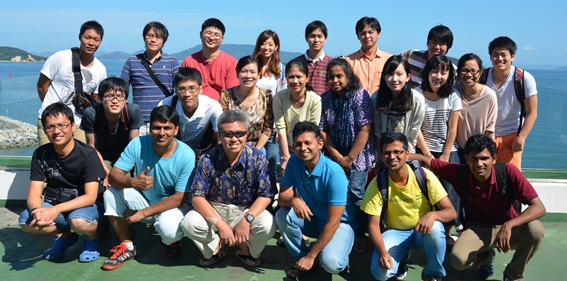未分類
category
2021.1.18; A paper of Dr. Hinenoya from UT has been accepted in Zoonoses and Public Health.
Journal: Zoonoses and Public Health
Title: Isolation and characterization of Escherichia albertii in poultry at the pre-harvest level.
Authors: Atsushi Hinenoya, Xing-ping Li, Ximin Zeng, Orhan Sahin, Rodney A. Moxley, Catherine M. Logue, Barbara Gillespie, Shinji Yamasaki*, Jun Lin*.
Abstract: Escherichia albertii, often misidentified as Escherichia coli, has become an emerging foodborne human enteric pathogen. However, the prevalence and major animal reservoirs of this significant pathogen are still not clear. Here, we performed comprehensive microbiological, molecular, comparative genomics and animal studies to understand the status and features of E. albertii in the US domestic and food animals. Although no E. albertii was identified in a total of 1,022 diverse E. coli strains isolated from pets and food animals in a retrospective screening, in a pilot study, E. albertii was successfully isolated from a broiler farm (6 out of 20 chickens). The chicken E. albertii isolates showed clonal relationship as indicated by both pulsed‐field gel electrophoresis (PFGE) and whole‐genome sequence analysis. The isolated chicken E. albertii displayed multidrug resistance; all the resistance determinants including the extended‐spectrum beta‐lactamase gene, carried by plasmids, could be conjugatively transferred to E. coli, which was further confirmed by S1‐PFGE and Southern hybridization. Whole‐genome sequence‐based phylogenetic analysis showed the chicken E. albertii strains were phylogenetically close to those of human origins. Challenge experiment demonstrated that the E. albertii strains isolated from human and wild bird could successfully colonize in the chicken intestine. Together, this study, for the first time, reported the isolation of E. albertii in poultry at the pre‐hrvest level. The findings from multi‐tier characterization of the chicken E. albertii strains indicated the importance of chickens as a reservoir for E. albertii. A large scale of E. albertii survey in poultry production at the pre‐harvest level is highly warranted in the future.


